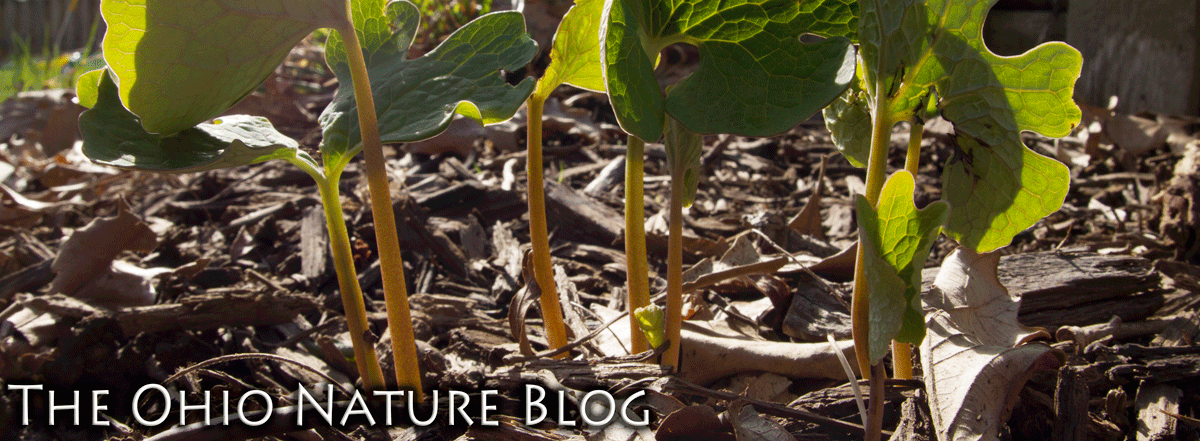So you're probably thinking, "Tom, are you crazy?" Even with more snow forecast tomorrow? Well, I went back through my photos of last year's activity, and let me just tell you that spring will be here soon. Soon we'll have a chorus of spring peepers across Ohio and the midwest. Megan and I shot this video of a single male spring peeper (Pseudacris cruicer) on March 18, 2007. The chorus of thousands of spring peepers can be deafening. Make sure you have your sound turned up when you watch the video- If it is hurting your ears, you are reliving the spring peeper chorus if full reality.
Yesterday I posted images of fine art, and today, I'm turning to my some of my favorite animals in Ohio, spring peepers and spotted salamanders (Ambystoma maculata). With the first warm spring rain, these tiny creatures emerge from their winter hiding places and head to temporary pools to breed. The spotted salamanders will return to the ground while the peepers stick around in wetlands, catching bugs and avoiding predators.
Last year, Megan and I searched for spotted salamanders in Columbus, but only found the spring peepers heard in the viedo. Our second outing of the year turned up a few spotted salamanders, but me missed the mass migration.
I have, however, witnessed this magical event one time in my life, when I was a graduate student at Miami University. My herpetology professor scheduled a field trip to a known salamander breeding pond. We were accompanied by another graduate student who had been visiting the pond for weeks, but had found no salamanders. We left the campus about 8:00 at night, arriving at the woodland pool soon after. Sure enough, when we got there, there was nothing but peepers. We searched, and searched, and searched the pond, but found no spotted salamanders. Finally, a drip here, a drip there- it began to rain. Would anything happen? Someone shouted out, "I found one!" I thought to myself, "really?" I thought they were full of B.S. And the shout came not from the pond, but from up on the hill. The class raced to the spot, and sure enough, in the leaves, was a magnificent 6 inch long spotted salamander.
How cool! It continued to rain, and as we were gathered, another classmate "spotted" a spotted. Then another one. Then another one! After 10 minutes, we could barely walk in the woods without stepping one them. We collected 50 for the grad students project (he had a permit from the Ohio Division of Wildlife) but we could have collected hundreds. The most amazing thing about the whole night is how a quick change in environmental conditions caused these sallys to come out from underneath their hiding areas in the leaf little and logs. It was awesome.


When I first saw these creatures in person, several things come to mind. First is their size- they are massive compared to the woodland plenthodonitid salamanders that I was more familiar with. Second- their color is spectacular. Incredibly spectacular for a creature that spends most of its time underground, and when it is above ground, it is during the night time. Third- If a poacher ever found a mass migration, look out. Hundreds if not thousands can be gathered at one time, and during one night, an entire population could be eliminated.
I hope everyone gets to see an ambystomatid salamander (like the spotted) this spring!
Tom

















































